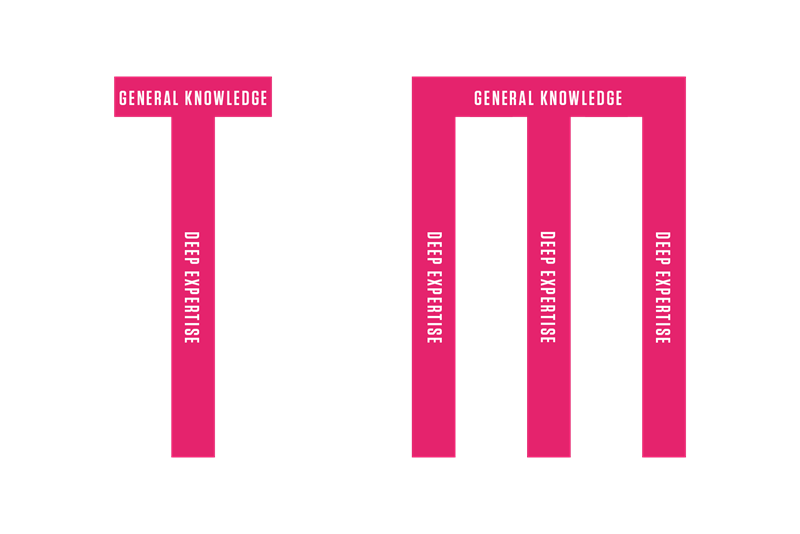Believe it or not, the product managers and product designers on your team want the same thing — to build a successful digital product. But it might not always feel like these folks achieve their dreams together. Without the right complementary skill sets in place, product designers might find themselves at odds with product managers, which isn’t only a recipe for a rocky work environment, it puts the success of your product at risk.

Finding team members with the right blend of generalist and specialist knowledge is crucial to a product team’s success. For years, we’ve heard about the T-shaped employee with the ability to apply knowledge across situations. But these days, especially in agile environments, teams also benefit from the M-shaped employee, someone with a multi-skill background who can apply those skills to multiple situations.
Even if you don’t have a hand in hiring, it will benefit everyone on the team if you come to the table with a clear understanding of your own skill set. Are you M-shaped? Or do you bring deep expertise in one area and the ability to collaborate, like a T-shaped employee?
Let’s face it — no one is an expert in everything. But that’s the reason we work better together. If you can acknowledge what you’re an expert in, as well as where you’ll need help, it sets the stage for a healthy working relationship.
Cross boundaries together
On agile teams, it’s unlikely everyone is going to stay in their lane. Flexibility is an inherent part of agility. And collaboration is vital. So is creating the time and space to do so. Here are some strategies to ensure your teammates cross lanes productively, for the betterment of the product.
3. Did we clearly define roles and responsibilities?
At Capco, we often roll on and off projects and work with multiple new teammates. All of that would get confusing, and disorganized for our clients, if we didn’t clearly define our roles and responsibilities at the start of working together.
Roles and responsibilities, in product management and design especially, can have significant overlap. Getting folks to discuss their specialized and generalized skillsets can allow prospective teammates to discover how they’ll best work together.
Product managers and designers can even define a way of working or create a working agreement. It should clarify who performs what, from research read-outs to prototype demos, and how the final roadmap decisions will be made. For a symbiotic, successful product manager-designer relationship to form and thrive, a working agreement is crucial.
4. Are we having honest conversations?
Finally, if you’re in an environment where the leadership may not empower you or make time to have these kinds of conversations with your teammates, make the time yourselves.
Clarify the rules of engagement from the start of a working relationship until the end. Share your areas of expertise with full transparency and be ready and open for discussion. At the end of the day, being open to feedback from team members in various roles should only help achieve the team’s ultimate goal.
Get rolling
Product manager and product designer roles are integral to the success of a product. We need to create space to foster a candid, collaborative environment in which both product managers and designers can thrive.
If you don’t feel like you have the team, skills, or resources to bring a cross-functional band of rockstars together to create a winning product — we’re here to help. Let’s navigate these waters together. By working with Capco’s help, your organization can create a complementary, collaborative team to build your next great product.
Judy Gottlieb is a Senior Consultant in Capco’s Digital practice who specializes in product design. Judy has a background in fine art, financial services operations, and compliance.